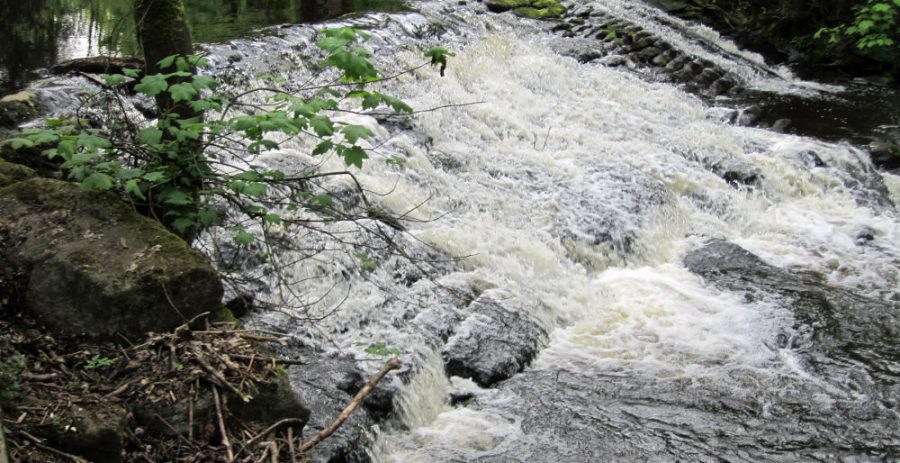
Introduction
Little London is one of the smallest sites in the valley, and one of the later Wheels in the valley to be built. It was erected as a cutler’s Wheel in around 1752, and is thought to have been used for cutlery and file grinding until it was demolished in 1911.
Trees now grow in the former mill dam, which is largely dry apart from a stream running through from the head goit entry (at the weir) to the overflow.
The well-preserved overflow is marked by a small bridge but the stonework and remains of the footings are wheel pit are hard to make out amongst the undergrowth.
History (1752–1910s)
Main trades: Cutlery and file grinding.

Little London Wheel has one of the most straight-forward histories in the valley. In 1752 Robert Greaves leased part of the stream for 21 years with an annual rent of £1 and a liberty to erect a cutler’s Wheel. In 1794 Thomas Spooner was running four trows and employing six men.

The Wheel was in ruins by 1903 and was let for a nominal sum to Samuel Dawson (a file grinder) for him to repair. Dawson was evidently still there in 1905 but the Wheel was recorded as empty by 1907 and demolished in 1911.

What's there now?
The steep stone weir, which is located immediately upstream of the overgrown mill dam, is in fair condition. The stream that now flows through the former mill dam is fed from the Nether Cut tail goit via a culvert, as well as from the river via a short head goit. There is a modern sluice gate on the head goit inlet and remains of a staple can be seen on the lintel.
The stream flows out into the river at the well-preserved overflow, which can be seen under the bridge carrying the footpath. The low-level drainage point is now at the level of the stream, with slots in the stones on either side for the shuttle board – this was raised and lowered using the capstan/roller mechanism mounted on the stones above.

The blocked tail goit is culverted towards Holme Head, but is now interrupted by the Crosspool storm pipe, which outfalls just above the Holme Head weir.
The footpath between Holme Head and Little London Wheel tends to be wet; drainage and re- surfacing work by the RVCG in 2013 aimed to alleviate this recurring problem. A brick-arched tunnel that linked the Little London tail goit to the Holme Head head goit was rediscovered whilst doing the drainage work here – only a few stones are now visible to the left of the path just above the weir.

Nature and wildlife at Little London Wheel
The drained mill dam has been colonised by trees, mainly Alder and Sycamore. A stream flows through from the head goit to the overflow. As at Holme Head, the rusty colour here (and in seepages along the river banks) is a result of water draining from iron-rich deposits in the hillside above. Great Woodrush can be seen in the mill dam and by the river.
A variety of woodland birds can be seen here. Look out in particular for Wren, Robin and tits in the trees and undergrowth. Grey wagtails can often be seen in the shallows along this stretch of the river and at the weir.
